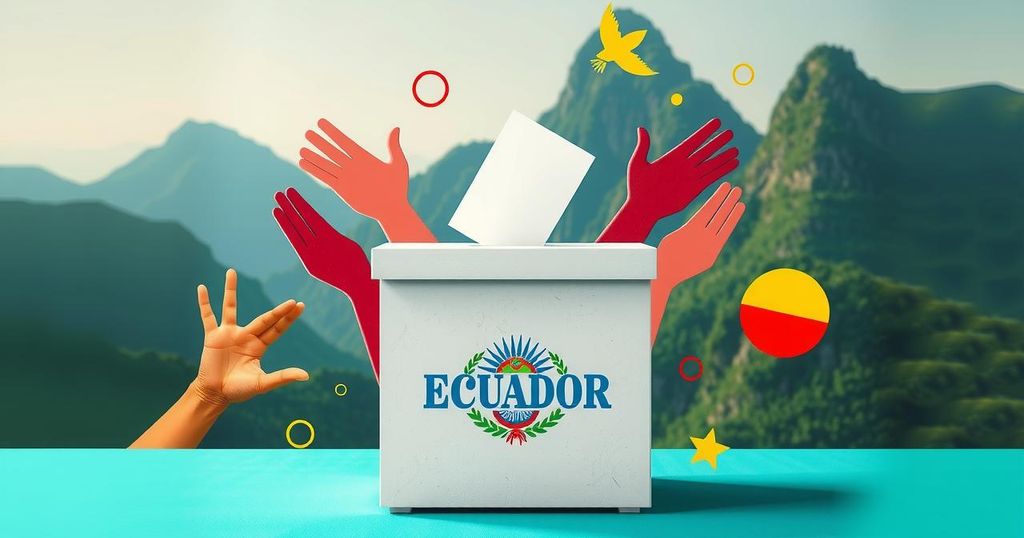Overview of Election Day in Ecuador: January 9, 2024

Ecuador held its Election Day on February 9, marked by varying weather and high voter turnout, with 83% participation. The voting process involved military oversight, a structured ballot system, and a record number of international observers. The significance of the identification card post-vote exemplifies the legal implications of participating in elections.
Election Day in Ecuador took place on Sunday, February 9, marked by varying weather conditions across the regions, including sun, rain, or mist. The geographical diversity of Ecuador includes the Andes mountains, the eastern Amazon jungle, and coastal lowlands, highlighting its resemblance in size to Colorado. As voters headed to the polls, they experienced different levels of accessibility and ambiance depending on their locations, such as in Giron and Cuenca.
In Giron, a town near Cuenca, voters enjoyed a swift ballot-casting experience with minimal wait time. Traffic congestion filled the narrow roads leading to local polling places, where vendors offered ice cream and sweets. Meanwhile, in Cuenca, voters faced longer lines at polling stations, but once inside, the atmosphere was quiet to respect the electoral silence that forbids campaigning and alcohol sales.
Outside Cuenca’s polling places, vendors sold lamination services for the identification card issued to voters post-ballot casting. The cost ranged from 25 cents in Cuenca to 50 cents in Giron. This proof of voting is crucial for completing various legal transactions, including buying or selling property or marriage registration. Individuals who fail to produce proof must visit election offices and pay non-voting fines with an explanation for their absence.
Ecuador boasts a voting populace of approximately 18 million, with around 83 percent of registered voters participating in the most recent election, surpassing the turnout rate of the 2024 U.S. presidential election, where about 36 percent of eligible voters did not participate. This stark contrast illustrates the significant engagement of Ecuadorians in their electoral processes.
The election process in Ecuador incorporates security from the military and local police alongside party representatives. Voters receive four ballot sheets and indicate their choices with a pencil, placing the completed ballots into secured boxes once voting concludes. The counting of votes occurs with meticulous attendance from election workers, ensuring transparency in the electoral process.
After polls close, military personnel oversee the collection and transport of sealed ballot boxes to regional headquarters, supplemented by electronic records of the count. A record number of 943 international observers were present to ensure the integrity of the electoral process, which included 3,933 polling places across the nation, thereby reinforcing the principles of democracy in Ecuador.
Ecuador’s Election Day illustrates a robust electoral process characterized by high voter engagement and strict observance of procedures. The notable differences in polling experiences across regions reflect the diverse nature of the country. With significant participation and international oversight, Ecuador’s commitment to democratic practices is evident in the orderly conduct of elections and the seriousness with which citizens approach their voting responsibilities.
Original Source: peekskillherald.com






